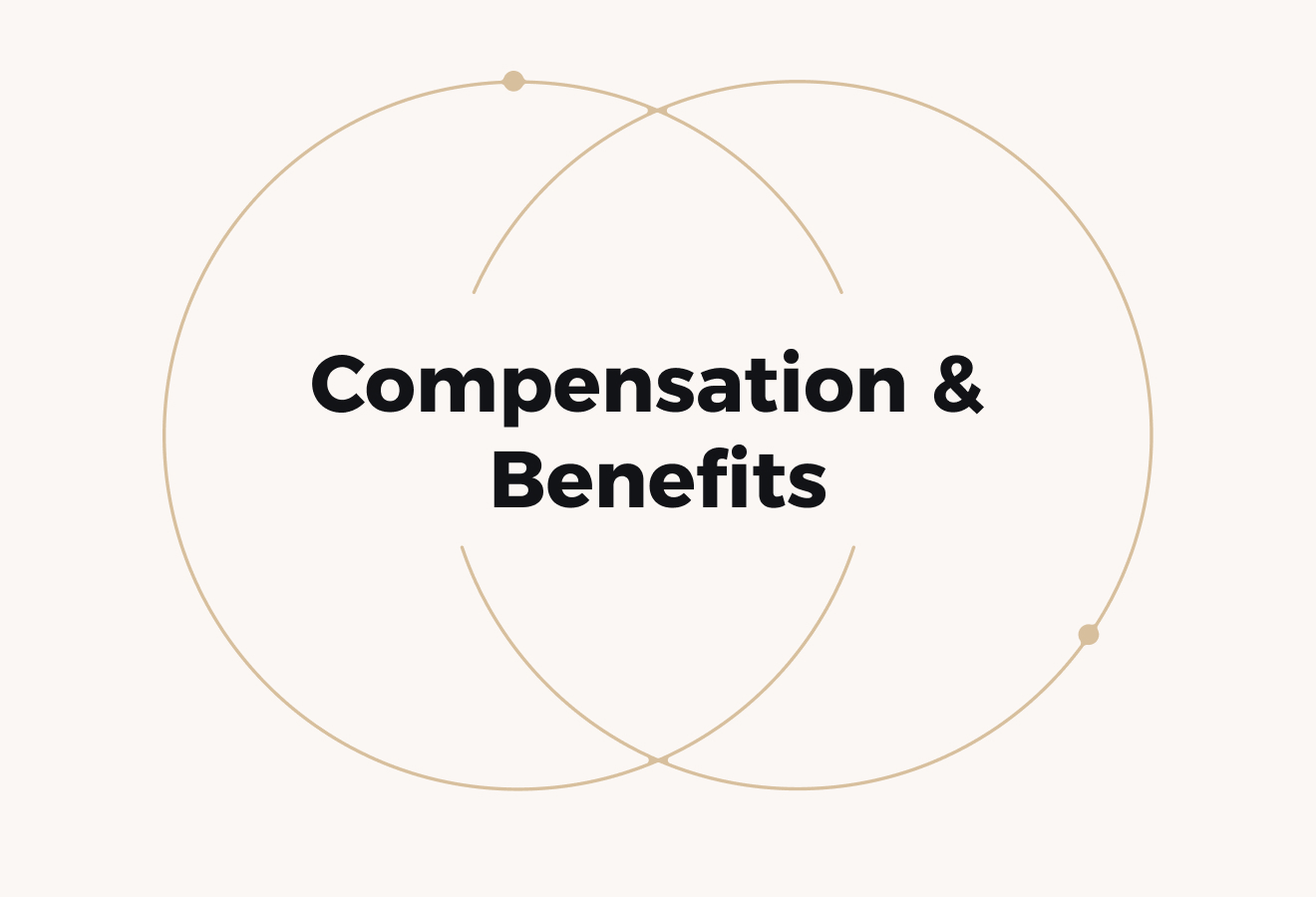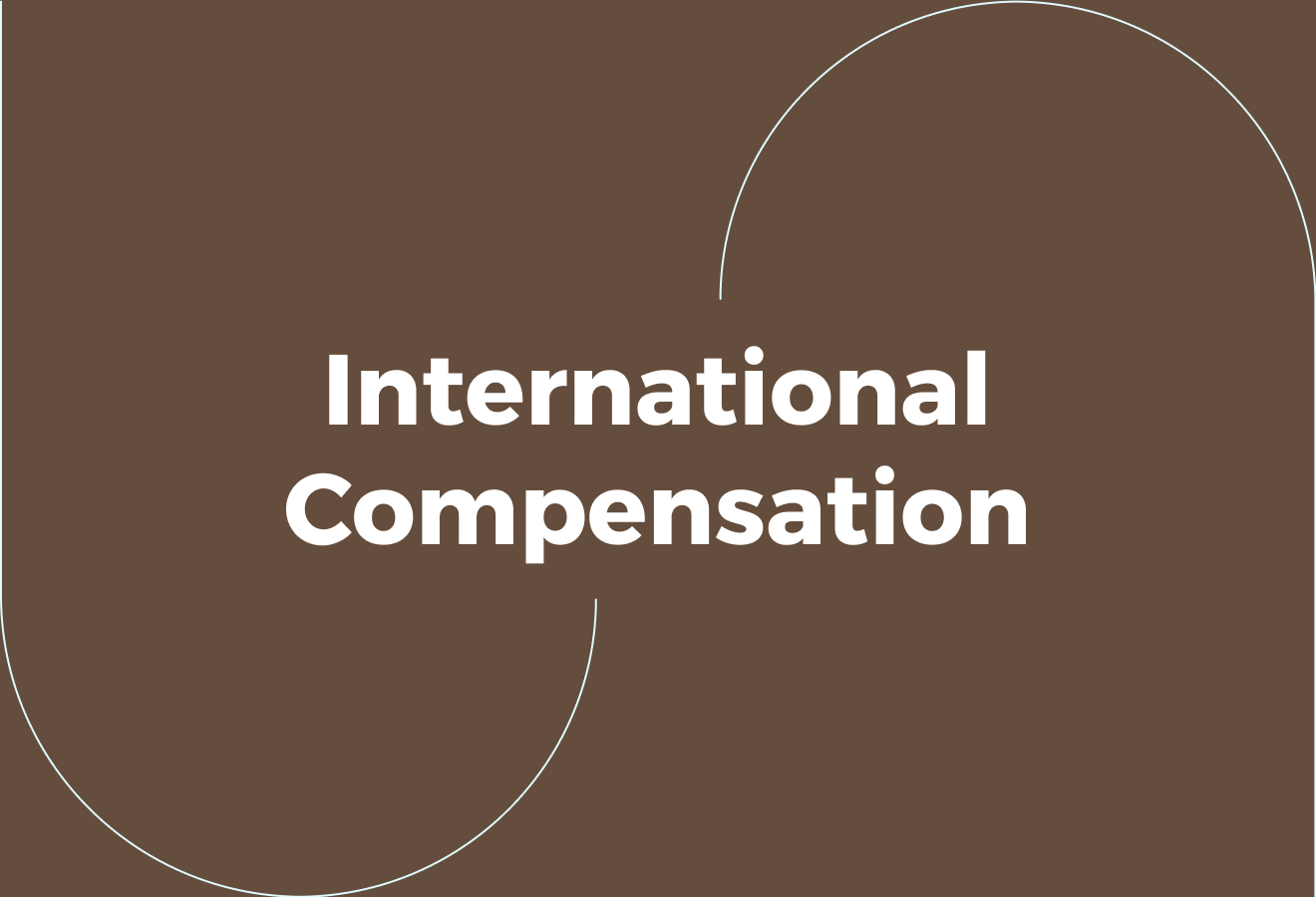International Compensation and Benefits (Build a Fair and Competitive Global Pay Strategy)

International Compensation and Benefits (Build a Fair and Competitive Global Pay Strategy)
Imagine setting pay and benefits for a team spread across five countries while juggling budgets, tax rules, and local expectations. That is the hard question compensation strategy must solve: aligning salary benchmarking, cost of living adjustments, tax equalisation, allowances, benefits design, and payroll compliance across borders. Where do you start when market pay, expatriate packages, relocation support, and social security rules pull in different directions? This article breaks those areas down so you can make clear decisions, build fair programs, and learn how international compensation and benefits work.
To help you apply these ideas, Cercli offers a comprehensive global HR system that integrates payroll, benefits administration, and compensation benchmarking. It tracks cross-border reporting, allowance setup, and tax tracking so you spend less time on compliance and more on strategy.
Summary
- Localisation is non-negotiable for fair pay; 45% of international employees report dissatisfaction with their compensation packages, indicating that one-size-fits-all salary approaches often lead to dissatisfaction.
- Market pressure is increasing; 75% of companies plan to increase their international compensation budgets in 2025, and the average international compensation package has risen 10% over the past year, necessitating more frequent salary reviews.
- Forecasting and approvals must be rules-driven, with models updated monthly, and any country where projected payroll spend exceeds the budget by 5% or more should be flagged, especially since 70% of companies plan to increase their global workforce next year.
- Organisations are shifting benefits spend to signal values. Sixty per cent have increased investment in global benefits, and 75% are now focusing on designing benefits that reflect global values, rather than treating benefits as mere compliance.
- Measure benefits with three linked metrics, not one, and aim to raise utilisation by at least 10 percentage points on underused offerings while flagging benefits equity deviations beyond a 5 per cent tolerance.
- Technology and data are becoming essential for reward management. 85% of organisations are investing in technology for global rewards, and 60% plan to increase budgets for data analytics in reward management by 2025.
This is where Cercli fits in; the global HR system helps teams centralise payroll rules, statutory mappings, and multi-currency payments, ensuring compliance checks and reconciliations remain consistent across countries.
What Is International Compensation and Benefits?

International compensation and benefits comprise a package of direct pay, bonuses, and equity, along with indirect elements such as health plans, pensions, and local social insurance, which must be tailored to each jurisdiction.
You design those elements around local tax, labour rules, and purchasing power, so pay is fair, compliant, and keeps people from leaving.
Why Does Localisation Matter Beyond Fairness?
This pattern appears consistently across Middle East and North Africa companies and remote-first firms: treating pay as a single global line item swings differ when:
- Tax codes
- Social insurance
- Currency
It feels exhausting when HR teams update spreadsheets every quarter, only to find that employees are facing unexpected tax bills or benefits that don't actually meet local needs. Think of pay as a radio that must be retuned for each city; leave it on one frequency and the signal is noisy.
Where Are Market Pressures Pushing Teams Right Now?
Recent budget moves are significant, as indicated by the State of Benefits Report 2025: 75% of companies plan to increase their international compensation budgets in 2025. That shift forces compensation owners to prepare for a faster cadence in salary reviews, benefits upgrades and more frequent market benchmarking.
How Fast Are Packages Changing?
You should expect base frameworks to evolve quickly, as indicated by the State of Benefits Report (2025), which states that the average international compensation package increased by 10% over the past year. For teams that update pay only annually, that pace creates immediate competitive gaps and retention risk.
Operationalising Compliance: Moving Beyond Manual Fixes
Most teams handle this by sticking with centralised policies and manual adjustments because it's familiar and low on process overhead.
As headcount and country counts grow:
- Those spreadsheets become fragmented
- Compliance checks slip off calendars
- Payroll runs require repeated fixes
Platforms like Cercli, positioned as a compliance-first, Middle East and North Africa-focused HRIS and payroll, map local rules such as WPS, GOSI, and Mudad into the payroll flow, reducing manual checks, cutting errors in payroll runs, and simplifying multi-currency and contractor payments so that launches scale without overwhelming the payroll team.
What Tradeoffs Should You Weigh When Setting Bands And Benefits?
If you prioritise internal equity, adopt locally indexed bands and standardised benefit levels that preserve relative pay inside the company. If you prioritise market competitiveness, permit market-adjusted salaries with fixed allowances that manage tax exposure.
The failure mode is:
- Over-index on internal parity, and you underpay in hot markets
- Over-index on market rates, and you create compression problems
- Higher overall costs
Choose based on whether retention or rapid hiring is the immediate constraint.
How Do You Operationalise Localisation Without Chaos?
Build a rules-first workflow, automate exchange rate and payroll tax updates, and separate gross-to-net logic from benefit eligibility rules to prevent changes from cascading. When approvals are structured and audits are automatic, payroll runs move from reactive firefighting to scheduled, verifiable processes.
That reduces the emotional load on HR and stops payroll from feeling like a high-stakes exam every month. That sounds settled, but the most revealing problems show up after you start paying people in multiple jurisdictions.
Things to Consider when Managing International Benefits and Compensation

A practical approach to managing international benefits and compensation emphasizes governance, cash planning, and operational guardrails that prevent minor issues from escalating into legal or retention problems.
Global Workforce Trends Report (2023): 70% of companies plan to increase their global workforce in the next year. That pace forces you to convert one-off decisions into repeatable rules and to forecast the total cost of employment with the same discipline you use for revenue.
How Should We Forecast The Real Cost Of Hiring Across Currencies?
Run rolling 12-month total cost of employment models and update them monthly, not quarterly.
I recommend three scenarios:
- Baseline
- Inflationary
- FX shock
Flag any country where projected payroll spend exceeds the budget by 5 per cent so you can trigger an approval or a hedging action. Treat payroll FX exposure like inventory: you don't want a single month to create a hit that wipes out hiring plans, so set a small FX reserve in your forecast and review it alongside headcount approvals.
Who Should Hold Decision Rights When Exceptions Are Needed?
The familiar approach is to give local managers freedom and let finance catch up later. That is inefficient.
Instead, create a two-tier approval matrix:
- Local sign-off for offers up to two grades
- Regional or finance sign-off above that
A fast-track for market-critical hires that auto-reports into an audit log. This keeps offers competitive while preventing stealth cost creep, and it creates a clear path to resolve disputes quickly when totals or benefits differ between countries.
How Do You Retain Trust When Pay Looks Different From Country To Country?
Transparency matters more than raw numbers. Produce a country-specific total reward statement that shows gross-to-net pay, statutory contributions and the monetary value of benefits. With the International Employee Satisfaction Survey (2023), 45% of international employees report dissatisfaction with their current compensation packages.
You can't treat that dissatisfaction as noise; it is a signal. Explain what the company covers, what statutory benefits are provided, and how allowances are calculated, so employees can see the rationale rather than guessing.
What Operational Checks Prevent Surprises On Payday?
Standardise pay cadence where possible, but where this is not feasible, automate reconciliation routines that compare salary payments to contract terms and statutory filings before final settlement.
Require vendor SLAs for benefits administrators with defined error windows and credits. Reconcile payroll to bank runs daily during scale-up months. Small automation wins here reduce manual fixes and compliance risk far more than one-off policy tweaks.
Centralising Approval Workflows to Streamline Monthly Pay Runs
Most teams handle approvals and payroll checks with spreadsheets and email because it is familiar and require no new tools. As the number of countries and stakeholders grows, that habit fragments approvals, buries context, and turns monthly payroll into a firefight.
Platforms like Cercli centralise approval routing, maintain an auditable history of exceptions, and automate the application of statutory rules and multi-currency payments, allowing teams to compress review cycles and reduce error-prone manual reconciliation.
How Should You Manage Contractors And Cross-Border Arrangements Without Adding Legal Exposure?
- Contractors with no Permanent Establishment (PE) risk
- Remote employees with local tax presence
- Expatriates needing gross-up or tax equalisation
Use compliant contract templates and maintain a calendar of statutory deadlines for each jurisdiction to ensure payroll and tax filings are never missed. Where using an Employer of Record is unavoidable, treat it as a governance tool, not a shortcut; require monthly reconciliations and visibility into social contribution calculations.
Applying Governance to Ensure Compliant Pay Processing Across the Middle East
Think of this work like navigating with a live map: you can estimate the route when the roads are empty, but once traffic, tolls, and detours appear, only a disciplined map and clear rules will get you there on time. Small governance fixes today stop big payroll errors tomorrow.
Cercli is designed for companies in the Middle East who need a flexible, compliant, and reliable way to manage their workforce, whether teams are local, remote, or spread across multiple countries. As a Global HR System, Cercli centralises onboarding, payroll, benefits, contractor payments and local compliance across the region and beyond, reducing manual work and payroll errors.
That tension between policy and personal expectation isn't abstract, and what comes next makes it painfully clear.
Related Reading
- Market-Based Pay Structure
- Compensation Equity Analysis
- What's Competitive Pay
- Compensation and Employee Retention
- Management Incentive Compensation Plan
- Geographic Pay Differentials
- Pay Grade Structure Example
Designing Benefits That Reflect Global Values

Designing benefits that reflect global values begins with clear choices about which outcomes you want the program to deliver, followed by matching delivery models to local realities.
You must translate values into:
- Measurable options
- Ensure fairness across borders
- Make it simple for employees to see the value they receive
How Do You Convert Values Into Local Equivalents?
Start by defining three outcome pillars, such as flexibility, well-being, and long-term security, and then build local options that deliver similar financial or emotional value. Use fixed allowances where tax rules make in-kind benefits impractical, and offer local in-kind choices where cultural norms matter.
I recommend a modular benefits architecture:
- A small, consistent core that applies everywhere
- Plus, local module employees can pick from
That approach is akin to designing a wardrobe with staple pieces and regionally appropriate accessories; it maintains the overall fit consistency while respecting local taste.
How Should Procurement And Vendor Governance Be Structured?
Treat vendor management as an operational programme, not an annual checkbox.
Set quarterly vendor scorecards that track:
- Claims turnaround
- Error rates
- Data-handling practices
Also, require SLAs with financial remedies tied to missed service levels. Include contract clauses for portability and data localisation so benefits administrators can move an employee between entities without manual rework.
Implementing Staggered Renewal Cycles to Manage Scaling Global Benefits Spend
Plan renewals on staggered cycles to avoid a single-point renewal bottleneck that forces rushed decisions.
The reality is that many organisations are increasing spending to meet international norms, as noted in the Global Benefits Trends Study (2023): “60% of organisations have increased their investment in global benefits to align with international standards.” Aon 2023 indicates that vendors and procurement must scale alongside this investment, or service quality will deteriorate.
Mitigating Benefit Eligibility Drift Through Centralised Data and Automated Enrolment
Most teams manage benefits changes with email chains and spreadsheets. That's understandable. On a small scale, it feels quick and low-cost.
But as headcount and country count grow:
- Offers and eligibility drift
- Renewal dates slip
- Employees receive inconsistent coverage
Platforms like Cercli centralise eligibility data, automate enrolment rules across entities, and reconcile vendor invoices to payroll deductions, which shortens reconciliation cycles and reduces manual corrections.
What Metrics Prove Benefits Actually Reflect Company Values?
Measure three things together, not in isolation:
- Uptake and utilisation for access-based benefits
- Perceived value from short pulse surveys
- Cohort retention when a benefit was a primary motivator of an offer
Aim to raise utilisation by at least 10 percentage points on underused offerings within six months through targeted communications and choice architecture.
Track the cost per employee alongside a benefits equity score that flags countries where comparable value falls outside an agreed-upon tolerance, for example, a five per cent deviation. Run small experiments with alternative communications and enrolment flows, and treat each cohort as a repeatable test so you learn what moves behaviour.
How Do You Protect Privacy And Compliance When Benefits Cross Borders?
Take a data-first approach, mapping the personal elements vendors need, where the data will reside, and whether transfers require legal mechanisms such as standard contractual clauses. Require vendors to certify their local data retention and deletion practices, and conduct annual audits.
For benefits that require health data, separate identifiers from payroll IDs to limit risk in the event of a vendor breach. These controls help mitigate the legal exposure that often accompanies a well-meaning benefits rollout.
How Do You Keep Costs Predictable While Still Signalling Values?
Use a mix of budgeted allowances and capped in-kind benefits. Offer a capped well-being stipend that employees can spend locally, paired with employer-sponsored options in markets where statutory systems are weak.
Set a rolling 12-month forecast that flags any country where benefits spend is trending above budget by 5 per cent, and requires approvals for any remedial increases. That gives you both predictability and the freedom to signal values where it matters most.
The Strategic Shift: Designing Employee Benefits to Reflect Global Values
Design choices are shifting fast: firms are clearly prioritising value signalling through benefits, not just compliance, as reflected in the Global Benefits Trends Study (2023), “75% of companies are now focusing on designing benefits that reflect global values,” and Aon 2023 makes clear this is a strategic shift, not a short-term experiment.
There is a lot more that determines whether these programs scale cleanly or collapse into costly admin, and the next section pulls on the thread that decides which path you take.
Technology and Data in Global Reward Management
Technology and data make global reward management reliable, rather than brittle. Get the data model right, and you turn pay and benefits into repeatable, auditable processes; get it wrong, and small errors compound into legal and retention problems across jurisdictions.
How Should Teams Structure Their HR Data To Stop Payroll Surprises?
Start with a single, time-versioned source of truth for person records, contracts, pay rules and statutory mappings. Use immutable logs to track who changed what and when, and maintain pay rule changes in a versioned pipeline that runs test payrolls before production.
If you require auditability, consider event-driven architectures that capture every calculation step. If speed to market is a priority, add a sandbox and automated regression tests that run every time a payroll rule changes.
What Analytics Actually Move The Needle For Compensation Decisions?
Focus analytics on three outputs:
- Market benchmarking
- Cost-of-employment scenarios
- Anomaly detection
Benchmarking lets you translate market data into local salary levers, scenario modelling gives you running 12-month cost forecasts under different FX or hiring plans, and anomaly detection flags outliers before they hit payday.
The market is backing this shift, as shown by Oakleaf Partnership (2025). Sixty per cent of organisations plan to increase their budget for data analytics in reward management, indicating that analytics are becoming the decision engine, not an optional add-on.
Why Are Integrations And Deterministic Rules Essential, Not Optional?
Payroll is an orchestration problem that everyone has to agree on:
- Bank transfers
- Statutory filings
- Benefits vendors
- Local tax calculations
Pre-built connectors and mapped tax authorities remove the need for manual re-keying.
Treat each integration as a contract with:
- Clear SLAs
- Test suites
- Fallbacks
A single mis-mapped benefit code can create a statutory shortfall that only surfaces months later. In short, push complexity into repeatable interfaces and automated reconciliations, so that human time is spent on policy development, not firefighting.
Centralised Payroll Administration and Audit Trail Compliance
Most teams handle complexity with spreadsheets and email because it feels quick and familiar. That works initially, but as countries and headcount grow, threads fragment, approvals slow and simple errors require days of reconciliation.
Platforms like Cercli centralise approvals, apply local payroll rules automatically, and maintain a complete audit trail, thereby compressing review cycles and reducing the likelihood of costly post-payroll corrections.
How Should You Protect Sensitive Payroll Data While Maintaining Its Usability?
Partition data according to purpose, separate identifiers from health or benefits details, and apply role-based access with blind testing environments for developers.
Use field-level encryption for:
- High-risk personal elements
- Keep retention and deletion policies aligned to local law
- Require vendor certification on data handling
Treat data privacy as a design constraint, not a checklist, so reporting and analytics can proceed without exposing unnecessary identifiers.
What Metrics Prove The Value Of Technology And Data Investments?
Measure:
- Error frequency per payroll run
- Average time to close a reconciliation
- Variance between forecasted and realised cost-of-employment
- Time to onboard a new country or contractor type
Convert those into cycle-time and cost KPIs that directly map to finance and HR outcomes, allowing you to justify automation projects with concrete returns rather than vague promises. The move is already underway, with Oakleaf Partnership (2025) indicating that 85% of companies are investing in technology to enhance their reward management systems, which suggests that this is now a standard expectation.
The Challenge of Statutory Holiday and Leave Entitlements
Cercli is built for the regional realities of the Middle East and North Africa, helping teams centralise payroll rules, statutory mappings and multi-currency payments in one place.
For companies that require a compliance-first, regionally compliant approach, Cercli serves as a Global HR system, reducing manual reconciliation and maintaining regulatory checks as visible and auditable as possible. That sounds comprehensive, until you see the one people rarely plan for and still get wrong.
Related Reading
- Compensation Review Process
- Withholding Compliance Program
- Pay for Performance Philosophy
- Compensation for Remote Employees
- Typical Equity for Startup Employees
Building a Purpose-Driven Global Rewards Strategy

A purpose-driven global rewards strategy ties every pay decision to a clear business outcome and an explicit employee expectation, then tests whether that link actually moves behaviour. Start by naming the outcomes you want, then map each outcome to one measurable reward lever and a pilot plan, such as:
- Hiring speed in growth markets
- Long-term retention for core roles
- Stronger in-market customer ownership
How Do You Convert Purpose Into Concrete Pay Rules?
Decide which actions deserve premium treatment, and be ruthlessly specific about when and how those premiums apply.
For example, give market premiums to:
- Roles that directly affect revenue in high-cost cities
- Use long-term equity for roles where continuity matters
- Reserve variable pay for activities you can measure within six months
Define eligibility, calculation, and approval rules up front so managers don't have to invent justifications when offers become urgent.
Which Metrics Show Whether Rewards Actually Support Your Purpose?
Track offer acceptance by market and role, voluntary turnover within 12 months by cohort, and a pay compression index that compares median new-hire pay to median incumbent pay by grade. Pair those with benefits utilisation rates and a net-pay volatility metric, which measures how much an employee’s take-home pay shifts after taxes and FX.
Treat each metric like a control chart on a factory line:
- Set alert thresholds
- Test root causes when a control limit trips
- Run small experiments to confirm a fix before you scale it
How Should You Pilot And Scale Changes Across Countries?
Run two simultaneous pilots over three months, chosen to contrast extremes, for example, one high-cost, highly regulated market and one lower-cost market with flexible benefits. Define hypotheses, sample sizes, and a minimum detectable effect for acceptance or retention.
Lock the legal and payroll checklist so pilots don't create compliance debt. If a change passes through the statistical and legal gates, expand in staggered waves with automated enrollment and communication templates that explain the why, not just the what.
The Cost and Compliance Trap of ‘Out-of-Cycle’ Payments
Most teams manage piloting and approvals with spreadsheets and informal emails because it feels fast initially. That works until approvals fragment, compliance checks are missed, and errors surface after payroll runs, creating costly corrections and damaged trust.
Teams find that platforms such as Cercli centralise statutory pay rules, multi-currency payments and contractor handling while keeping:
- Audit logs and approval flows are visible
- Shortening migration
- Reconciliation times without adding more manual work
What Governance Keeps A Purpose-Driven Plan Honest?
Create a compensation health score that blends outcomes and controls:
- A weighted mix of target KPIs
- Pay equity variance
- Benefits parity
- Payroll error rate
- Updated monthly and visible to finance and HR leads
Require semi-annual band reviews, an exceptions log with rollback authority, and a small salary adjustment reserve for correcting pay compression within 90 days. Communicate calculations transparently with a simple employee statement that shows gross and net pay, statutory contributions, and the local value of any core benefits, so employees can see the logic rather than guessing at fairness.
How Do Technology And Analytics Support This Work?
Design dashboards that do three things well, not twenty poorly: show market gaps versus target bands, forecast total cost of employment under alternative hiring plans, and surface anomalies before pay runs.
That capability is why investment is accelerating, as noted in WTW's 2025 analysis, which shows that 75% of organisations plan to increase their investment in technology for global reward management by 2025. This pushes reward teams to operationalise these rules rather than manage them by memory.
The Strategic Role of Remuneration in Attracting and Retaining Top Talent
Expect analytics to be the decision engine, because WTW reports that 60% of companies are using data analytics to enhance their reward strategies, and that shift changes how quickly you must iterate offers and benefits.
A final practical note on communication: the most effective changes pair numbers with empathy.
When we advise teams, the ones that:
- Win explains tradeoffs plainly
- Show the local calculations
- Give managers ready scripts for offer conversations
- Those steps reduce the anger
- Confusion that otherwise follows uneven rollouts
The next move may seem small, but it often determines whether a rollout succeeds or stalls.
Related Reading
- Solutions for Equal Pay
- Performance Incentive Plan
- Typical Equity for Startup Employees
- Compensation Communication
- Compensation Planning Tools
- International Compensation and Benefits
- Enterprise Compensation Management
- Market Pricing Compensation
Book a Demonstration to Speak with Our Team about Our Global HR System
Payroll runs, statutory contributions, and multi-currency contractor payments can consume your team's time and lead to avoidable errors. According to the Global HR Systems Survey 2023, 75% of companies reported improved efficiency after implementing a global HR system.
Consider Cercli, a compliance-first, regionally compliant Global HR System that centralises pay rules, onboarding, benefits, and cross-border payments, allowing you to shorten reconciliation cycles and protect net pay. According to the Global HR Systems Survey 2023, Companies using a global HR system saw a 30% reduction in administrative costs.
Book a demonstration to see how that predictability helps you scale international compensation and benefits without the usual admin challenges.










